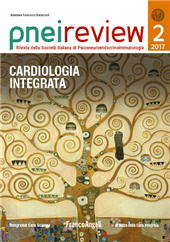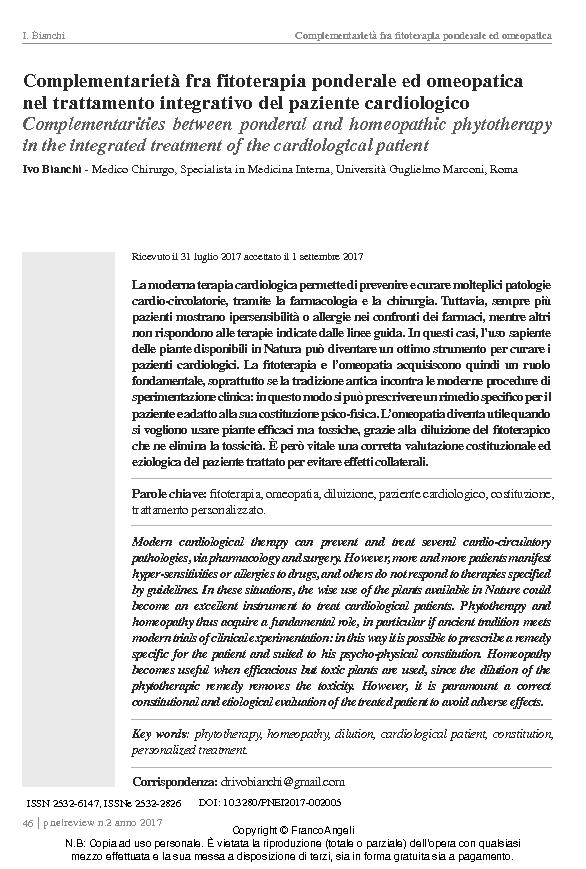Complementarietà fra fitoterapia ponderale ed omeopatica nel trattamento integrativo del paziente cardiologico
46-58 p.
La moderna terapia cardiologica permette di prevenire e curare molteplici patologie cardio-circolatorie, tramite la farmacologia e la chirurgia. Tuttavia, sempre più pazienti mostrano ipersensibilità o allergie nei confronti dei farmaci, mentre altri non rispondono alle terapie indicate dalle linee guida. In questi casi, l'uso sapiente delle piante disponibili in Natura può diventare un ottimo strumento per curare i pazienti cardiologici. La fitoterapia e l'omeopatia acquisiscono quindi un ruolo fondamentale, soprattutto se la tradizione antica incontra le moderne procedure di sperimentazione clinica: in questo modo si può prescrivere un rimedio specifico per il paziente e adatto alla sua costituzione psico-fisica. L'omeopatia diventa utile quando si vogliono usare piante efficaci ma tossiche, grazie alla diluizione del fitoterapico che ne elimina la tossicità. È però vitale una corretta valutazione costituzionale ed eziologica del paziente trattato per evitare effetti collaterali. [Testo dell'editore].
Modern cardiological therapy can prevent and treat several cardio-circulatory pathologies, via pharmacology and surgery. However, more and more patients manifest hyper-sensitivities or allergies to drugs, and others do not respond to therapies specified by guidelines. In these situations, the wise use of the plants available in Nature could become an excellent instrument to treat cardiological patients. Phytotherapy and homeopathy thus acquire a fundamental role, in particular if ancient tradition meets modern trials of clinical experimentation: in this way it is possible to prescribe a remedy specific for the patient and suited to his psycho-physical constitution. Homeopathy becomes useful when efficacious but toxic plants are used, since the dilution of the phytotherapic remedy removes the toxicity. However, it is paramount a correct constitutional and etiological evaluation of the treated patient to avoid adverse effects. [Publishers' text].
Ist Teil von
PNEI review : rivista della Società Italiana di Psiconeuroendocrinoimmunologia : 2, 2017-
Artikel aus derselben Ausgabe (einzeln erhältlich)
-
Informationen
ISSN: 2532-2826
KEYWORDS
- Fitoterapia, omeopatia, diluizione, paziente cardiologico, costituzione, trattamento personalizzato
- Phytotherapy, homeopathy, dilution, cardiological patient, constitution, personalized treatment



